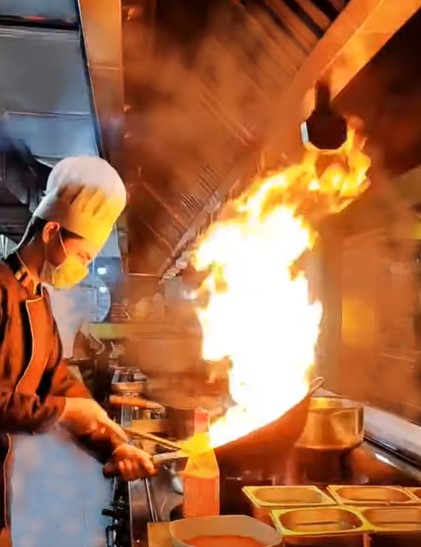The Commercial Kitchen Scenario.
VARUN RAJAN | CENTURY MECHNICAL SYSTEM FACTORY. LLC
Let me start with the most unavoidable and interesting thing in the world: “The Food.” The food is always an experience, and we wish to have different types of food—a good, healthy, sometimes junky, spicy, tangy diet—but on one condition: we all wish for a clean and neat environment around us. Yes, dear friend, I am referring to the daily challenge that we face: “Don’t look around; I am referring to our kitchen. Now I can see a smile on the face of someone who has accidentally cooked at least once in their lives. We all know that extracting and avoiding oil, grease, food particles, and unpalatable odours in our own kitchens can be difficult. Whatever the food is, we cannot eat it if the environment where it is cooked is not clean and smelling. From this we need to understand how important is food, water, air, as same as it’s quality is also very important.

In today’s fast-paced world, most of us seek out commercial kitchens to satisfy our hunger while also discovering new flavors. Commercial kitchens are also known as culinary kitchens, shared kitchens, community kitchens, kitchen incubators, food innovation centers, accelerators, and food hubs. Cleanliness and safety are the major challenges of a commercial kitchen. An environment contaminated with oil, grease, the burning odour of fried food, smoke, and other odours is an unimaginable but true picture of a commercial kitchen.
To significantly reduce odors to a sustainable rate, an ecology unit is developed with the objective of removing smoke, oil, and grease fragments from the kitchen ventilation system.

The primary target of the ecology unit is to filter out as much oil as it can from the air flowing from the kitchen hood before venting it through the exhaust system and outside the building. By this the ecology unit preserve the quality of the air clean and livable.

The filtration process in the ecology units works in multiple stages. The exhaust gas has to go through an electrostatic precipitator (ESP uses electrical energy to charge particles either positively or negatively to remove particles from a gas stream)), followed by a metallic pre-filter (it protects the sterilizing filter and lengthens its lifespan by trapping big particles including dust, oil, and carbon as well as pipe scale and rust), a secondary fine filter (Fine filters are designed to capture fine particles up to 5 microns. It is normally used as a secondary filter after pre filters to have prolonged service life.), carbon filters for the removal of odors, and a fan to handle the static pressure drop and also maintain the airflow in the system. In some cases, HEPA filters as well as Dampers are provided as per the customer’s requirements. In addition to helping to protect the environment, ecology units also shield occupants and other systems from potential fire threats inside the exhaust ducts.

Ecology units are useful in commercial kitchens that serve hotels, restaurants, and the entire food industry. Examining the consequences of heavy-duty kitchen operations, such as continuous grilling and frying, is crucial. As kitchen effluent production increases, an effective and high-performance ecology unit must be installed. Odor and grease emissions are controlled by environmentally friendly devices, as are duct cleaning, exhaust fan maintenance, and keeping property surfaces clean.
While concluding this, the relevance of the ecology unit is not finished here, but as in a scenario of a commercial kitchen and its air quality, we could say that “an ecology unit is the most relevant and inevitable part of the best quality commercial kitchens.”










